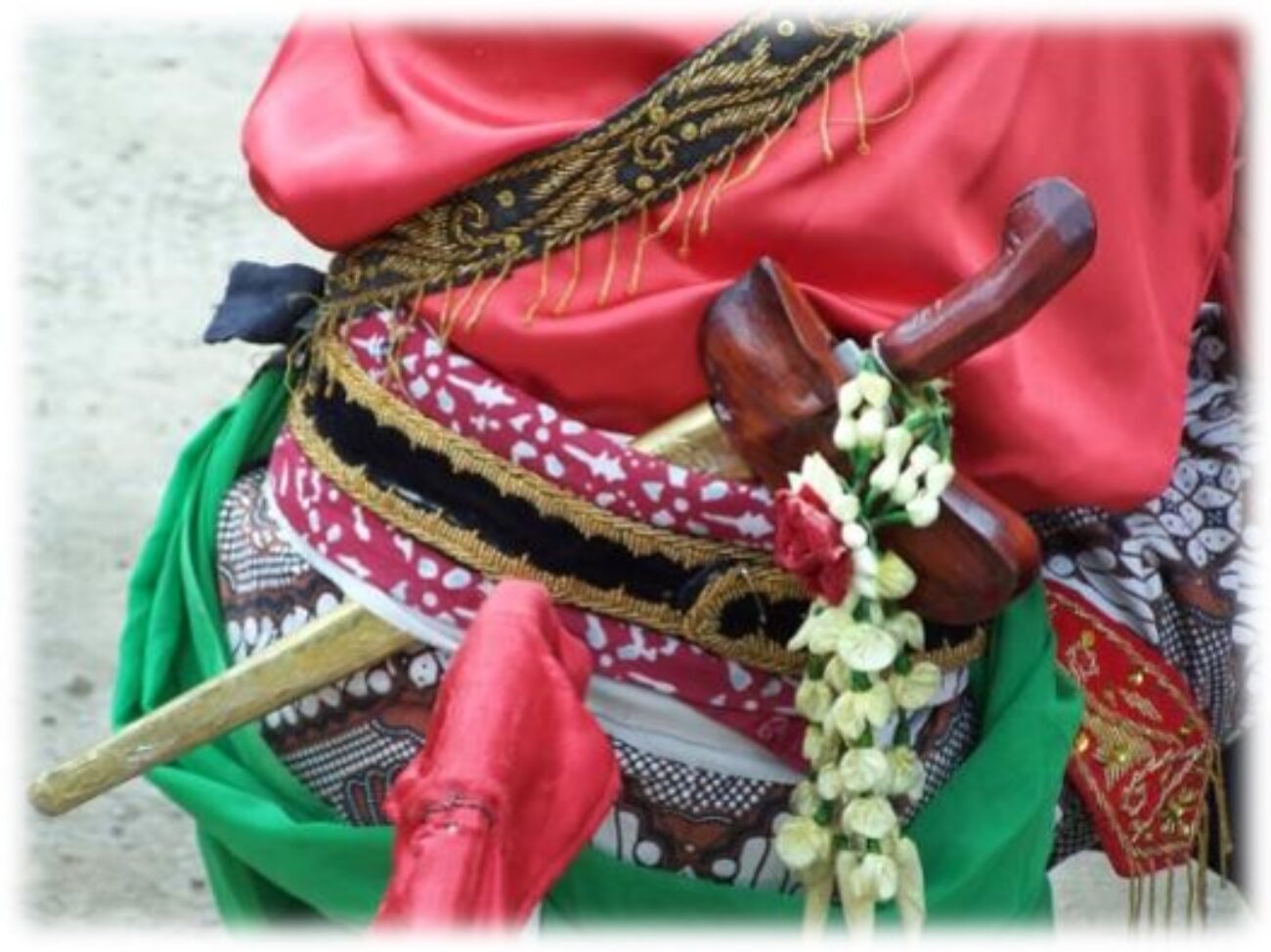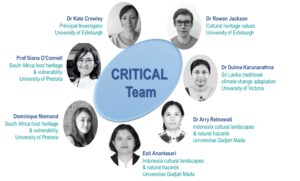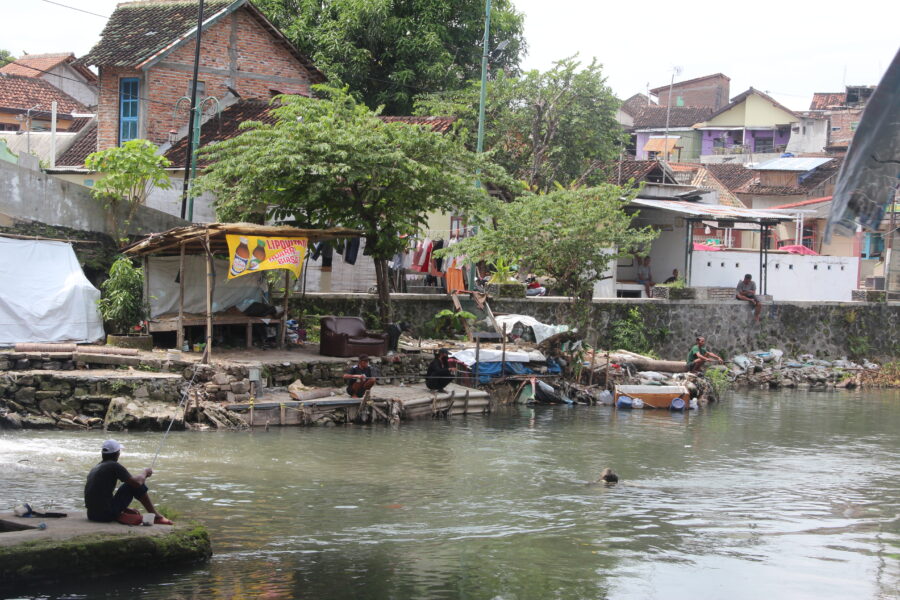The power of environmental folklore and cultural memory for understanding climate change risk and adaptation
Climate change impact on cultural heritage is one of the obscured areas in Sri Lankan academic scholarship. The prevailing knowledge gap creates an urgent need to reconstruct the indigenous and local climate knowledge systems in Sri Lanka, constructed through a comparative study. The case studies were selected representing ethnic and cultural diversity and cross-regional basis to support this comparative study. This research examines the traditional knowledge systems as a comparative study. Environmental folklore (Intangible Heritage) was collected from small-scale tank cascade village cultures in Sri Lanka.
This conventionally neglected research elaborately magnify the local ecological knowledge, traditional livelihood, contemporary social norms and dynamics, and harmonious connection between culture and nature.
One of the advantages of collecting data from folklore is the opportunity to obtain a detailed version of the profile of women in respective village cultures. Cultural memories of the peoples who are the stakeholders of the Sri Lankan hydraulic civilization offer a detailed narration that is robust enough to fill the lacunae of the social life of women non-elites sidelined in heritage studies.
The research focus
This research mainly examines the role of women in small-scale tank cascade village communities in Sri Lanka as a response to extreme weather events and climate change. Main case studies focused on locations Galtemwewa, North-western province, Moragoda, North-central province, Kalukele, and North-central province. The sub-case studies were conducted to compare the role of women in different ethnic and cultural settings. These locations are Sri Lankan aboriginal community in Dambana, Uva province, Tamil Island community in Delft Island, Northern Province, and coastal fishing community, Ulhitiyawa, North-western Province. Status of women, gender attribution, gender identities, gender roles of these societies were identifies and compared.
Whose heritage?
The earliest writings about Sri Lanka’s history were mainly based on colonial constructions. The main streams of their approaches were colonialism, orientalism, imperialism, and antiquarianism. According to the content of this literature, it is clear that the colonial writers had a preconceived notion about Sri Lankan culture in attempts to understand Sri Lankan life, behavioral patterns, beliefs, rituals and flora, and fauna.
A great number of volumes written the Sri Lankan irrigation systems and detailed recordings of Ceylon ecology and traditional livelihood were used as a tool of colonialism and this understanding helped the colonial administration to plant the Eurocentric values on Sri Lankan earth. This situation created an inferiority complex over traditional livelihood in traditional village cultures, and they started giving up their traditional indigenous values and knowledge systems. However, the knowledge they record can be used as a valuable archival collection.
There is a growing body of literature about tank cascade systems, ecology, biodiversity, agrobiodiversity, biophysical changes, climate change, groundwater chemistry, food and water security, dramatic changes in village cultures and traditions sustainability (Maddumabandara, Marambe, Darmasena, Gunasinghe ) These researches examine the Sri Lankan tanks and agricultural societies through environmental and sociological aspects. They draw our attention to the wider environmental aspect including climate change and environmental relations and issues beyond ancient ingenuity and water management. These research helps to understand the human intervention to the natural environment and their environmental sensitivity and ecological knowledge.
The characteristic elite bias of existing literature and the grandeur of the ancient built environment sidelined the small-scale tank cascades in village contexts.
Traditional livelihood, climate risks, their adaptation strategies were not adequately examined in the Sri Lankan historiography and heritage studies scholarship. The invisibilization of women in these agrarian societies is a knowledge gap of existing literature.
There is a growing body of literature on water security, agriculture, and climate change in Sri Lanka. The gender lenses to climate change and exploring this area through folklore (intangible heritage) and cultural practices and memories were done for the first time of its kind through this study. So, this research undoubtedly fills the gaps in an obscured area in climate science and cultural heritage studies.
Climate Profiles
Temperatures have increased across Sri Lanka, especially since 1980, although these trends are less significant than other parts of the globe. The South Asian monsoon has weakened, causing a decrease in precipitation in the second half of the 20th century, as a result of anthropogenic aerosol forcing (IPCC 6th assessment report). There is variation in rainfall across Sri Lanka, with the southwest experiencing much greater rainfall than the northwest and southwest.
Temperatures across Sri Lanka and the surrounding ocean areas are expected to increase over the next century. Heatwaves and humid heat stress will also be more frequent and intense (IPCC 6th assessment report).
Gender and Environmental Knowledge
Women are often identified as the most vulnerable and victims of extreme weather events. However, this study found challenges faced by women such as gendered division of labour and gender tasks can also enrich and strengthen them with the knowledge of local ecology, traditional weather forecasting, and household management, proactive in water related conditions.
This research offers an alternative profile of energetic and empowered women, providing an alternative picture beyond the domestic sphere demonstrates the strength, capacity, skills, and responsible consumerism and futuristic approaches of women towards the well-being of the family, the society and environment.
Role of women as a heritage bearer and her indigenous climate knowledge can effectively contribute towards climate solutions, climate change adaptation strategies and environmental decision making.
Intergenerational knowledge
Local people explore and examine the natural environment thoroughly and work in alignment with nature. The behaviour of animals, trees, clouds, rainfalls, and many more facets of nature tell them about the natural climate cycle. Moreover, they have ecological memories of the climate hazards.
The villagers have embedded these climate literacies into the indigenous knowledge and passed them down to the next generation to identify the climate change in advance. The folk songs were the best method that worked for this. The children could easily memorize by heart these factors as they were sung by their elders constantly.
For example, tree worship is considered a divine attribution to nature to nurture and save their catchments. Social organization is functioned by customary laws and people understand the importance of the environment and how it badly impact human if they damage to nature. On one hand, they put moral obligations to maintain responsible consumerism and explained the aftermaths of over consumerism. They embedded these ideas in the advisory folksongs and all work songs.
People are told that the trees were the divine home of gods and goddesses. As a result, deforestation was highly discouraged. People started some small shrines next to the trees and hang a branch of the tree whenever they pass the tree. This is a living tradition in the tank cascade villages. These divine attributions are superstitions but they work very well in the village setting in terms of environmental protection and more effective than government laws and rules.
A changing world
Sadly, although this research identified many traditional mechanisms for water and land management that have been passed down through generations, the research also identified some emerging risks faced by the communities. These include:
- Unidentified kidney disease – likely due to the chemical fertilizers and pesticides, heavy metals, and chemicals.
- Vector-borne disease – Malaria, Dengue
- Covid 19 has impact the elderly community and therefore there is a loss of traditional skills and knowledge at a rapid rate.
- All these three above health issues caused the death of the elderly community and farmers who were recognized as heritage custodians.
- Younger generations tend to seek new occupations and give up their traditional agriculture and craft activities.
- Industrial agriculture and traditional paddy cultivation tools are replaced with modern machines. So, work songs are not sung anymore in many villages, and womens’ labour such as reaping, threshing, gathering, and winnowing is done by machines. Community-based agriculture is slowly disappearing. The machines require fuel and cause carbon emissions can be recognized as environmental issues.
- There is a vacuum in the traditional knowledge and interpreting the knowledge
Click here to explore more about Cultural memory for resilience in Sri Lanka.
This is one of the ArcGIS story map series from the CRITICAL project. Dr Kate Crowley set up the story map from the Sri Lanka case study provided by Dr Dulma Karunarathna.




